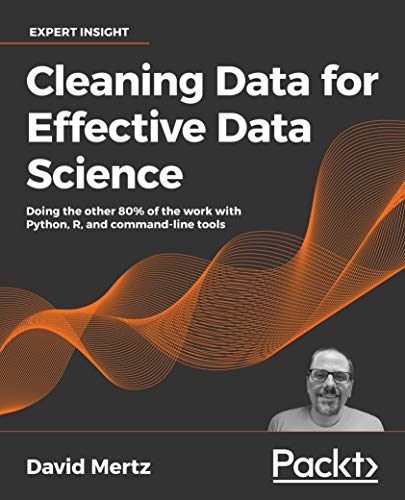Cleaning Data for Effective Data Science: Doing the other 80% of the work with Python, R, and command-line tools
This post was published 2 years ago. Download links are most likely obsolete. If that's the case, try asking the uploader to re-upload.

English | 2021 | ISBN-13 : 978-1801071291 | 499 Pages | True PDF, EPUB | 14.98 MB
Think about your data intelligently and ask the right questions
Key Features
Master data cleaning techniques necessary to perform real-world data science and machine learning tasks
Spot common problems with dirty data and develop flexible solutions from first principles
Test and refine your newly acquired skills through detailed exercises at the end of each chapter
Book Description
Data cleaning is the all-important first step to successful data science, data analysis, and machine learning. If you work with any kind of data, this book is your go-to resource, arming you with the insights and heuristics experienced data scientists had to learn the hard way.
In a light-hearted and engaging exploration of different tools, techniques, and datasets real and fictitious, Python veteran David Mertz teaches you the ins and outs of data preparation and the essential questions you should be asking of every piece of data you work with.
Using a mixture of Python, R, and common command-line tools, Cleaning Data for Effective Data Science follows the data cleaning pipeline from start to end, focusing on helping you understand the principles underlying each step of the process. You'll look at data ingestion of a vast range of tabular, hierarchical, and other data formats, impute missing values, detect unreliable data and statistical anomalies, and generate synthetic features. The long-form exercises at the end of each chapter let you get hands-on with the skills you've acquired along the way, also providing a valuable resource for academic courses.
What you will learn
Ingest and work with common data formats like JSON, CSV, SQL and NoSQL databases, PDF, and binary serialized data structures
Understand how and why we use tools such as pandas, SciPy, scikit-learn, Tidyverse, and Bash
Apply useful rules and heuristics for assessing data quality and detecting bias, like Benford's law and the 68-95-99.7 rule
Identify and handle unreliable data and outliers, examining z-score and other statistical properties
Impute sensible values into missing data and use sampling to fix imbalances
Use dimensionality reduction, quantization, one-hot encoding, and other feature engineering techniques to draw out patterns in your data
Work carefully with time series data, performing de-trending and interpolation
Who this book is for
This book is designed to benefit software developers, data scientists, aspiring data scientists, teachers, and students who work with data. If you want to improve your rigor in data hygiene or are looking for a refresher, this book is for you.
Basic familiarity with statistics, general concepts in machine learning, knowledge of a programming language (Python or R), and some exposure to data science are helpful.
Download from free file storage
Resolve the captcha to access the links!
Registered members don't get captcha ... just sayin